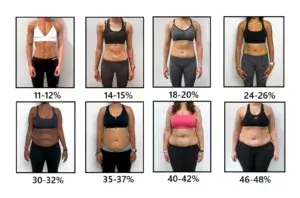Your body fat percentage is the proportion of your body mass that is fat. There are many ways you can measure it, but for an annual test I would only suggest two:
- Body Fat Scales
- Comparison to online images
These two are not the most accurate but are an inexpensive alternative to options like a DEXA scan.
Body Fat Scales
Their technical name is “bioelectrical impedance”, as they send tiny electrical impulses through the body to measure your body composition. Those electrical impulses are impeded (hence “impedance”) when they travel through fat, relative to lean muscle.
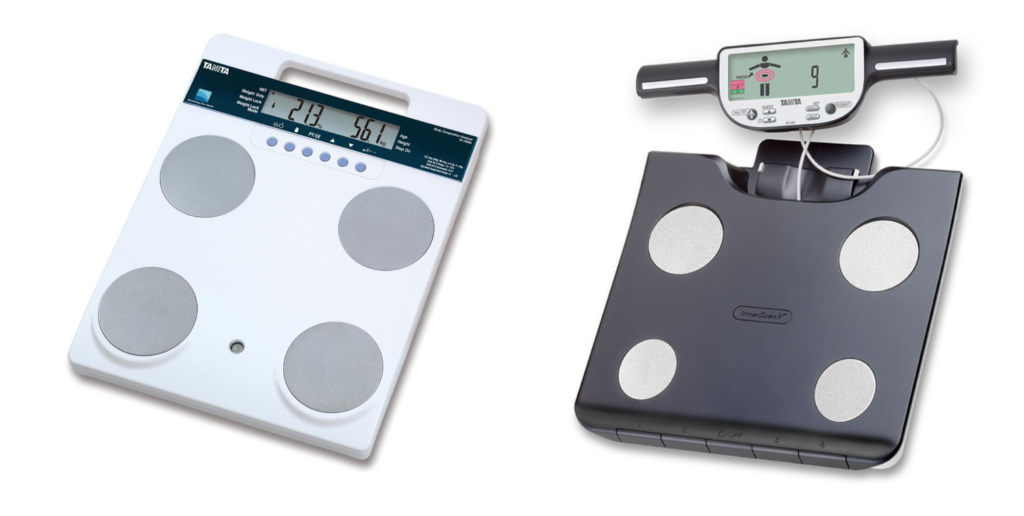
The basic scales involve four panels while more advanced versions will include something to grip with your hands. The hand electrodes allow it to report the proportion of fat in different body parts, and is beyond what is needed here.
Body Fat Scales and Hydration
A reasonable set of body fat scales can be purchased for under £100. The biggest downside in regards to accuracy comes from how hydrated you are. The more water you have in your system, the faster the electrical impulse travels, and the lower it will report your body fat to be. In my experience, I’ve found this to be a very linear relationship.
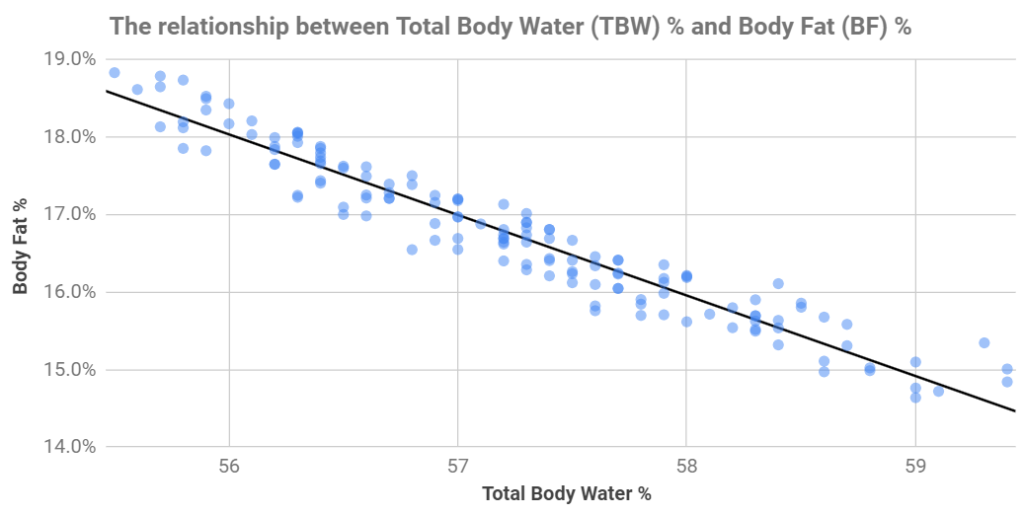
Alongside your body fat percentage, the scales should report something called Total Body Water (TBW) %. This is what’s plotted on the x-axis in the graph above. A healthy range for men is 50-65%, while for women it’s 45-60%, though this declines with age. I take the mid-point for men, 57.5%, and shift my reported body fat percentage by 1% for every 1% I am from 57.5% TBW. For women the mid-point would be 52.5%. Note that other people may not see the same 1%:1% relationship between TBW and body fat that I experience.
I recommend weighing yourself mid-morning and paying attention to your hydration status after breakfast. The goal is to step on the scales as close to your mid-point as possible. Did you know that drinking a glass of water will see your hydration status rise within 30 minutes? Experiment a few times until you’re happy that the number on the scale isn’t being distorted too much.
Comparison to online images
The second option for estimating body fat percentage costs nothing and can be done alongside the body fat scales. There are various sequences of images online displaying people with specific body fat percentages. While the distribution of fat can vary by individual, think “apples” vs “pears”, overall they are a good tool to use.
Here is an example set I have created for both men and women. Simply scan through the images and identify the best approximation of your body fat levels.
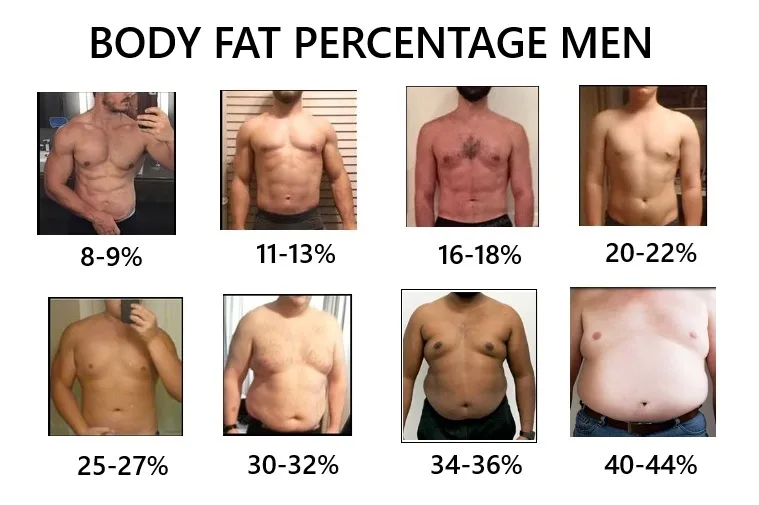
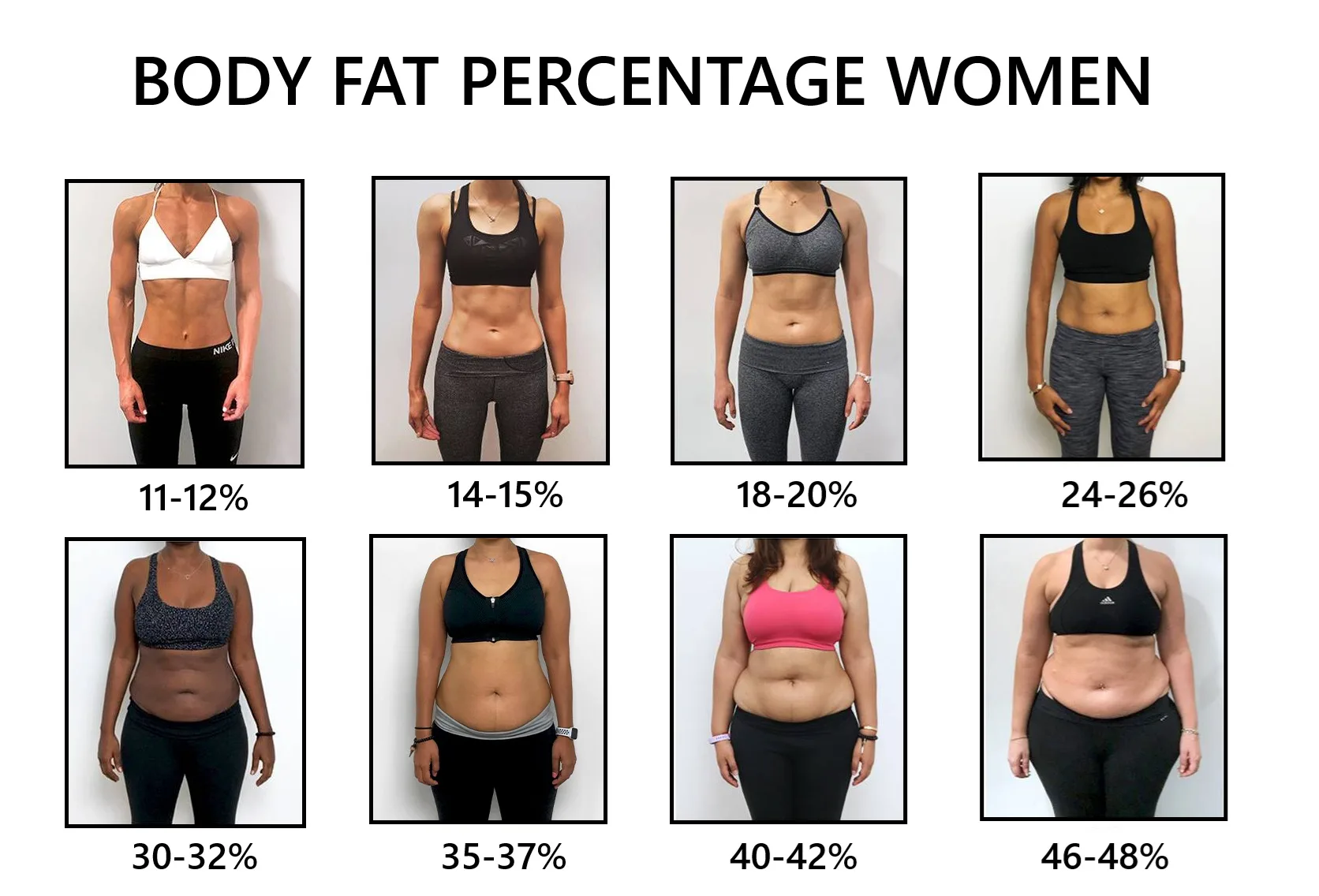
Remember that it’s a continuous measure, so you may fall somewhere between two images. It may also help to take pictures of your own physique, you can then make direct comparisons to yourself over time.
What Your Measurements Mean?
First of all it’s important to note that there is a level of ‘essential fat’. This is around 5% for men and 10% for women and is vital for physiological health. Beyond that, here are some rough guidelines:
Body Fat Percentage in Men
- Up to 5%: Essential fat
- 6-13%: Athletic physique
- 14-17%: Good physique
- 18-24%: Average physique
- 25%+: Overweight or obese
Body Fat Percentage in Women
- Up to 10%: Essential fat
- 11-17%: Athletic physique
- 18-24%: Good physique
- 25-29%: Average physique
- 30%+: Overweight or obese
How to reduce your body fat percentage is beyond the scope of this article. However, prioritising protein intake while holding a caloric deficit will ensure you hold on to lean mass. This allows the majority of the weight you lose to come from fat and not muscle.

